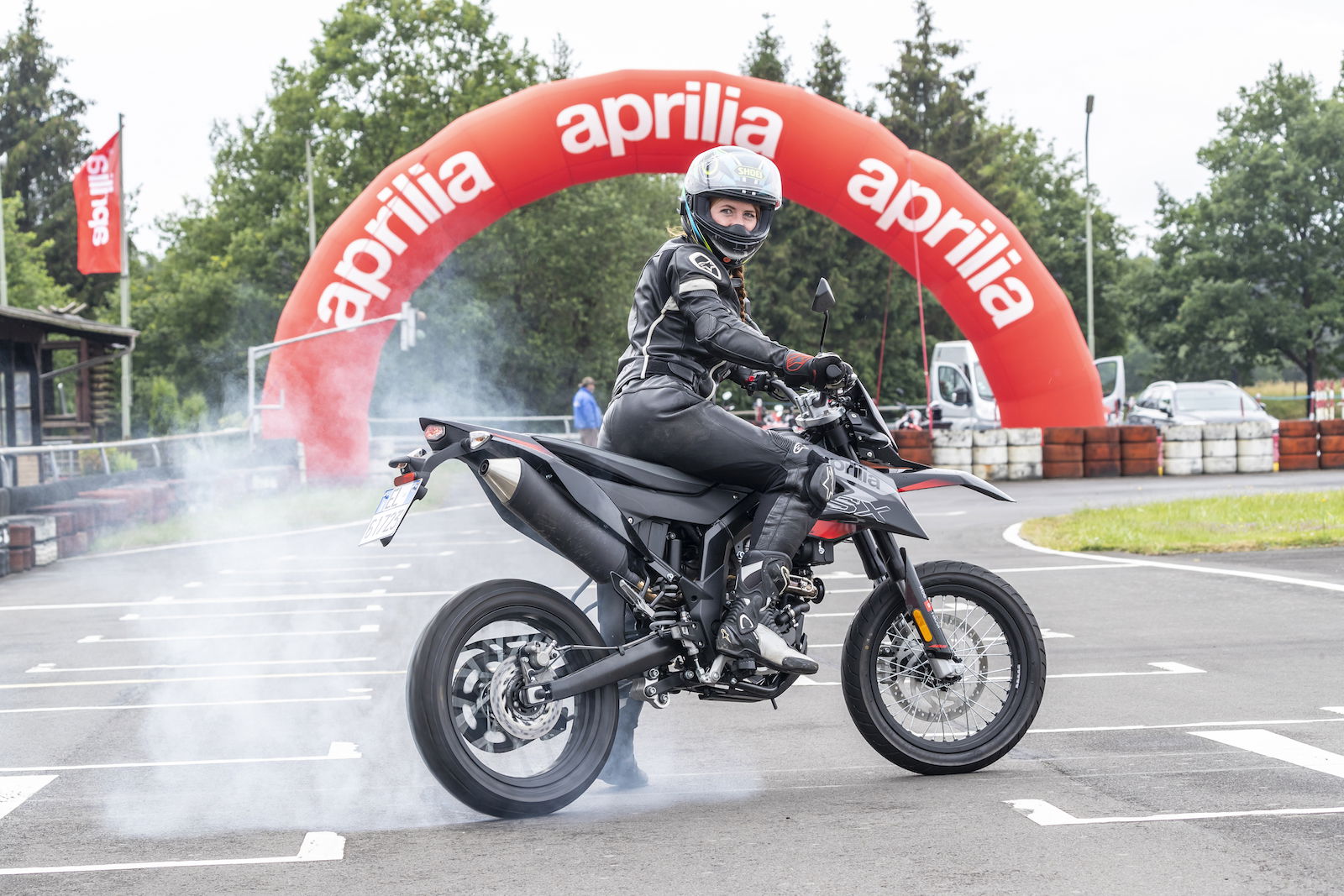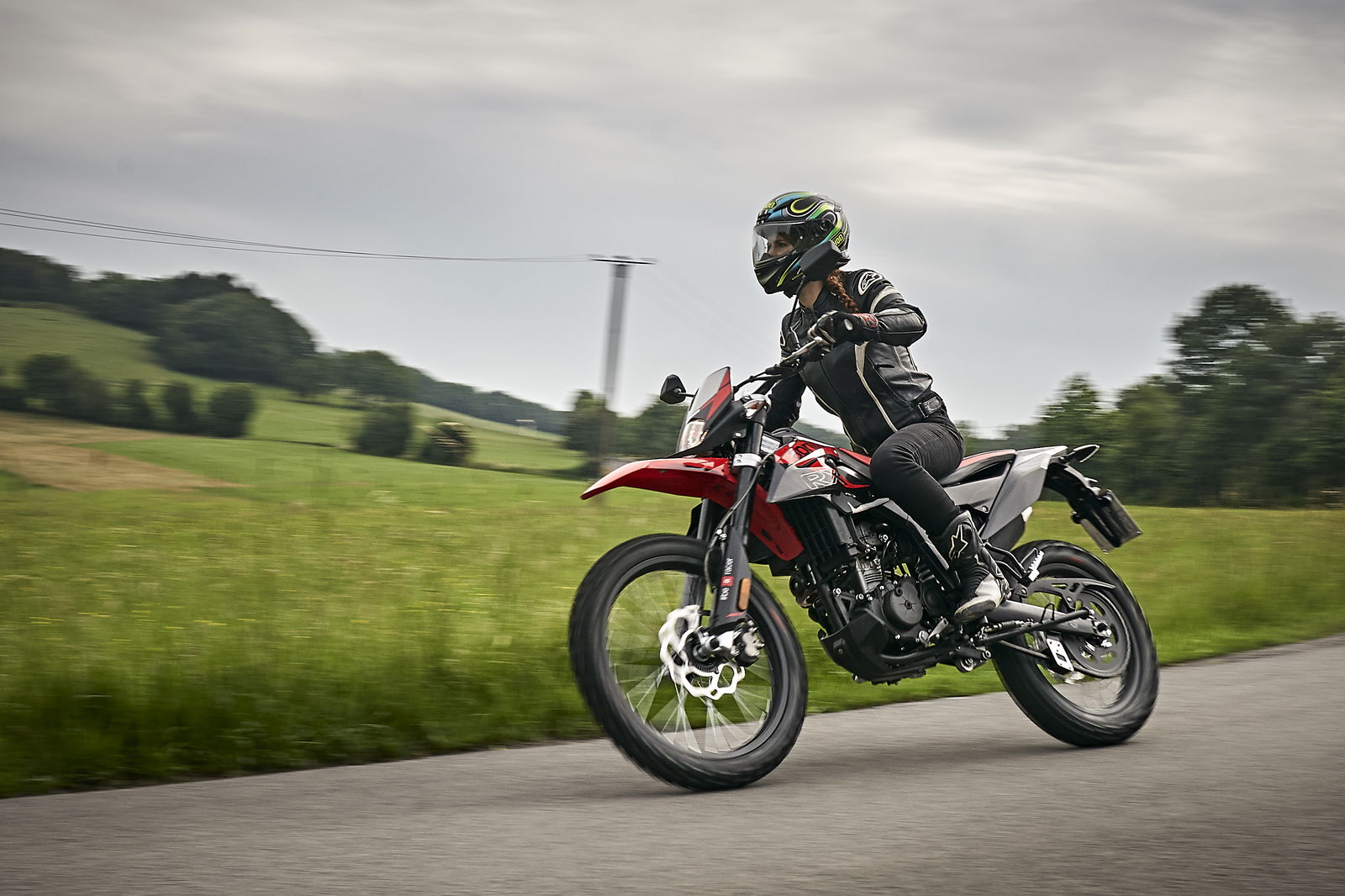Launch test: 2018 MV Turismo Veloce 800 SCS
Automatic clutch adds refinement to Varese's sporty tourer. But you can still wheelie it...

YOU MIGHT not expect a small Italian firm like MV Agusta to be the ones to surge forward with new innovation and technology. But they’ve really been putting their brains to good use recently and the result is an impressive lineup that’s full of toys and tricks.
Their latest Turismo Veloce 800 sporty tourer, for example, isn’t just your average hefty pannier wagon. MV’s technical director Brian Gillen says it’s more of a sportsbike that you can ride every day, and the specs back this up.

A counter rotating crankshaft, quickshifter, blipper, electronic suspension, datalogging and, especially, the 192kg dry weight put the Turismo Veloce Lusso 800 SCS in a class of its own. Triumph’s Tiger 800 is near enough 50kg heavier.
The real reason we’re here at the factory in Varese, though, is to test MV’s latest SCS (Smart Clutch System). It’s similar to the Rekluse clutch that’s been used in dirt bikes for a while now (albeit with a few subtle differences). The first thing you'll notice is that the clutch and gear levers both remain in place unlike some competitor auto setups, like Honda’s Dual Clutch Transmission on the Africa Twin, VFR, Gold Wing etc. The reason? Wheelies, apparently. It’s good to know even the MV designers are hooligans at heart...
The Clutch – so how does it work?
The first thing to do is forgot the clutch lever is even there, something that’s really hard to do as your head has been telling you to use one for years, and you still instinctively pull it in when you come to a stop, even though on this SCS-equipped Turismo, you don’t need to.
Selecting first gear is a simple case of just pushing down on the regular gear lever, something that would immediately stall any bike.

A quick launch from a standstill with the bike idling in first (no clutch needed remember) and you’ll reach 60mph in 3.1 seconds, which isn’t to be sniffed at. That’s a drama-free launch that’s fully electronically assisted (via the usual traction control/anti-wheelie route), and MV says it’ll do this all day, whilst technically remaining unstallable.
The clutch itself is actually a rather simple installation – there are some centrifugal wedges which move out as the clutch spins faster, gradually locking it up as you open the throttle and the revs rise past idle. It’s the same principle as used on basic scooters, though much better engineered, and avoids all the weight and hassle of a computer-controlled, solenoid-operated clutch setup, a CVT auto transmisison or Honda’s dual-clutch setup. Fair play to MV for having a go with it.
When I asked the MV bods why they came up with this system, they said performance is at the forefront of everything they do. It would also come in handy if you spent a lot of time in cities buzzing through the traffic.
We got the chance to ride the SCS clutch version in the morning, followed by the regular clutch bike in the afternoon. It took a good few miles to get used to leaving the clutch alone, and even though the SCS system has been perfected, there’s still something about the accuracy of clutch lever at low speed that can’t be beaten.

Handling
Handling on Pirelli’s Scorpion tyres was faultless, even if they look a bit off-road oriented. It’s the slow speed switchbacks where the Turismo Veloce really excels, showing off its featherlight weight compared to something like an F850 GS or Tiger 800. The counter-rotating crank layout made a noticeable difference to direction changes and with the suspension set up stiffer, it was like riding a tall sportsbike. The soft setting would deal with bumpier UK roads without feeling too wallowy.
Engine
Their 800cc 3 pot motor seemed an odd choice, as with just 110bhp it didn’t set my pants on fire. Then again, my current daily is a GSX-R1000R so everything feels slow. MV plans to drop the revvier 140 bhp lump from its RR Brutale model into future Turismo Veloces, which should pep things up nicely, especially with a passenger and full panniers. The low weight helps it feel quicker than it is, with a load of midrange and a lovely rasping howl even with the standard triple pipes.
Toys
Because the SCS is never truly in gear, it’ll roll off even if parked in first, so a rear footbrake style system has been designed which is very intuitive as long as you remember to use it…

The relatively high price (£18k ish) gets you endless adjustability from the various modes on the busy screen. Each mode adjusts traction, engine braking, throttle sensitivity, suspension stiffness (which also compensates for pillions) The Brembo brakes were faultless and the ABS took some real pushing downhill over bumps to get it to engage, so a double thumbs up there. Cruise control is also included, an essential on a bike like this.
There’s also a Bluetooth app that maps your rides, and gives you more info than you’d ever need including maximum lean angle and throttle openings. It’s like data logging straight off a race bike...
NEXT - CONCLUSION AND SPECS

